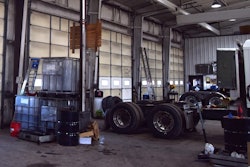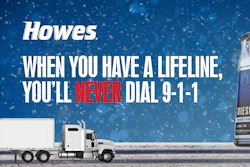While the wheel hasn't changed much in millions of years, truck and trailer tires can provide a mountain of data to a technician who knows how to interpret it – and you don't even have to plug in, connect or log on to get the information.
With more than 100 years of accumulated maintenance experience and hard science as a guide, a good technician examining a tire can discern a wide array of problems quickly, such as questionable driver behavior, alignment issues, worn components and improperly spec’d tires.
Just like walking on an injured foot or leg for an extended period can cause irregular wear on a shoe, the same thing too can happen to tires. Whether it’s a toe problem or a camber problem, or if it’s a drive axle misalignment problem, it’s going to show up in your tires.
Tires represent a significant investment for fleets. It's usually a motor carrier's third highest expense behind salary and fuel, and when it comes to tire wear drivers are a fleet’s first line of defense, according to Michelin. All drivers should include a comprehensive tire examination in pre- and post-trip inspections. During those inspections, they need to get “up close and personal,” rubbing their hands on the tires to check for any feathering, cupping or diagonal wear.
There also might be a more personal reason for drivers to monitor tire wear, because tires can expose bad driving habits and their own poor tire care. Tires easily can indicate driver practices such as high-power or jackrabbit starts, brake skids or lack of regular inflation.
If you have spec’d a tire improperly, you will quickly see an increased wear rate, says Continental. If a fleet has selected a tire that isn’t right for the application – such as a regional tire optimized against cutting and chips that is being used in a slow wearing application – tramline wear would be evident.
“Tires are getting more specialized all the time, according to Goodyear. We now have tires that are best suited for high-scrub applications – a great example would be a school bus – that are constantly turning left and right, with lots of starts and stops. The tires go through a lot of scrubbing in all those tight turns. Goodyear designs high-scrub tires with a tread compound that wears “as well as it can in that situation,” Goodyear says. “It’s going to resist the scrubbing. If you didn’t have that tire on, you’re probably going to burn your tires off pretty quickly because you have the wrong tire for the application.”





